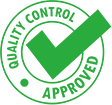Four new LG models certified by the FCC, could be the rumored K (2017) series
Apple and Google reportedly partner with LG Display on flexible OLEDs for foldable devices
Samsung Galaxy A7 (2017) receives its Wi-Fi certification, one step closer to getting unveiled
Huawei P9 and Mate 8 start getting Android 7.0 Nougat updates
Although previous rumors suggested Huawei might start updating the P9 and Mate 8 to Android 7.0 Nougat operating system in early 2017, it appears that the Chinese handset maker decided to rush things up a bit.
We're now getting reports from China that the Android 7.0 Nougat update is now live for both the Huawei P9 and Mate 8. These are not just beta builds pushed to a small number of users, it's the real deal and it's rolled out to all users.
Unfortunately, Huawei's Android update roadmap leaked a while ago might have gotten one thing right, as the update is limited to China for not.
There's a high chance that Huawei won't widen the availability of Android 7.0 Nougat in other countries this year, so P9 and Mate 8 users worldwide might enjoy the advantages of the new update starting early 2017.
However, if you're located in China, you want to look for firmware version B352 if you own the Huawei P9, and firmware version B552 in case you're rocking a Mate 8.
Those who installed beta Android builds should rest easy as they will receive the Android 7.0 Nougat update as well, though the firmware versions will be different: B363 (Huawei P9) and B562 (Huawei Mate 8).
So, there you have it folks, it looks like Huawei P9 and Mate 8 users in China are already getting the update, while the rest of world might have to wait until early 2017.
Galaxy A3, A5 and A7 (2017) leak out: waterproof, new glass design
Update: a few more Galaxy A-series 2017 slides have been sent our way, adding real images of the phones, as well as filling out details that confirm a new glass design, IP68 waterproofing for all, and 3000 mAh, 3300 mAh, and 3500 mAh battery capacities, respectively. Also, judging from the date on the Always-on display, release may come January 2nd.
Seven, Galaxy A7 '17 - that should be the promo invite of Samsung's upcoming alpha midranger. Last year, Samsung unveiled its A-series crop in December, and, judging from the recent deluge of certifications for the eventual Galaxy A7 (2017), it might out the new models in a week or two, which would be about a year after the A7 2016 model.
A finger scanner and USB-C port are par for the course on a phone marked with 2017 in its name, but the most intriguing part of the whole setup, save for the high-res selfie snapper, is that the Galaxy A7 (2017) is said to sport IP68 certification, marking a first for the A-series of Samsung phones.
Apple to open a flagship store at the Carnegie Library in Washington, D.C.
If you don't grow, you shrink. That seems to be Apple's mentality, as the company is reportedly looking forward to opening a new flagship store in Washington D.C.'s Carnegie Library. The Washington Business Journal reports that the local convention and sports authority has agreed to let Apple proceed with its plans, which include renovating the 113-year old building.
The company will work in tandem with Foster + Partners of London in redesigning the 63,000 square feet of space, possibly borrowing ideas from central Apple stores in London, California, and San Francisco. The design company is the one behind the aforementioned outlets, notable for elements like giant video screens, glass windows, and gathering places.
Apple's London store at Regent Street is also situated inside a historic building, and the company has been given a preservation award for its sensitive repurposing of historic properties, which means Apple knows how to handle the Carnegie Library's time-tested look and build. It will eventually become the company's second store in the District, the first one being in Georgetown.
The deal will be considered this Thursday. It's not known when Apple will be able to begin the renovation, and there's no schedule for the store's eventual opening.
Apple hogging OLED display supplies for future iPhones? No problem, say Huawei and Oppo, we'll make our own panels
Apple often sits on the sidelines regarding a new and unproven technology, and when it matures enough, it decides that it's good enough to be applied on a grand scale. Case in point is the OLED screen tech, and grand scale in Apple's case might mean that up to 70 million such panels might be needed for a premium iPhone 8 modelwith curved display next year
Since Apple's next-generation products including tablets and smartphones may use AMOLED panels, demand from 2018-2020 is expected to stay strong which will limit other smartphone vendors from acquiring sufficient supply. This will cause their products to become less competitive in the market.
5 Jet and Glossy Black alternatives to the iPhone 7
5 Jet and Glossy Black alternatives to the iPhone 7

Everyone wants the Jet Black versions of iPhone 7 and iPhone 7 Plus. Units are sold out worldwide and Apple still struggles to catch up with the high demand. In the meantime, Samsung is looking to fill the niche and is about to release its own shiny black version of the Galaxy S7 edge. All eyes are on the two giants battling for the glossy black supremacy this winter, as people eagerly wait for the opportunity to wipe fingerprints off their phones' glass backs every five seconds.
But we here at PhoneArena began to wonder, aren't there any other glossy black options? Of course there are. So, in case you're not too keen on waiting for an iPhone 7 Plus or the new glossy Galaxy S7 edge, here are some alternatives that you can buy right now.
iPhone 8 could become Apple's best selling phone ever, OLED screen and wireless charging to be key features
2017 marks the 10th anniversary of the iPhone, and it could be a huge year for Apple in terms of sales, obviously thanks to the much anticipated iPhone 8.
According to famous KGI Securities analyst Ming-Chi Kuo (known for his accurate predictions when it comes to all things Apple), iPhone suppliers are getting ready to produce between 120 and 150 million new handsets in the second half of fiscal year 2017 (for Apple, this means March - September 2017).
As previously reported, no less than three iPhone 8 models are expected to debut next year. Alongside direct successors to the iPhone 7 and iPhone 7 Plus (which should sport screens of 4.7 inches and 5.5 inches, respectively), a third model with a curved OLED screen of around 5.2 inches could hit the market in 2017. As mentioned yesterday, Apple is seemingly testing more than 10 iPhone 8 prototypes, and still has time to decided what models to release.
If Apple sells more than 120 million iPhone 8 units, this will become the company's best selling handset series to date, surpassing the iPhone 6 in popularity.
Ming-Chi Kuo notes that the high demand for iPhone 8 models will likely be driven by the new curved OLED screen, as well as by wireless charging. Interestingly, right now, it's said that only the 4.7-inch iPhone 8 may feature wireless charging (in addition to a "glass casing"). If a recent rumor is to be believed, Apple's wireless charging technology could be like no other out there, allowing the iPhone 8 to be charged even if it's up to 15 feet away from its transmitter. Of course, it remains to be seen if there's any truth to this.
Huawei reportedly working on 10 nm Kirin 970 processor
On the heels of Kirin 960's debut last month, new rumors are suggesting that Huawei is already working on a next generation processor. Predictably dubbed the Kirin 970, the new chip will reportedly be a big leap in terms of performance from the 960, which was built on the FinFET 16 nm process just like the Kirin 950.
The Kirin 970 is said to be an octa-core chip built on the 10 nm process and will reportedly support global LTE. Huawei's decision to switch to the 10nm process for its next-gen silicon may have been spurned by recent announcements from Qualcomm and Samsung whose next processors, the Snapdragon 835 and the Exynos 8895, will be built on Samsung's new 10 nm process and be able to fit 30 percent more transistors than current 14 nm offerings.
There is no info yet regarding Kirin 970's debut, but it will likely power Huawei's 2017 high-end flagships and come out in time to compete with 10nm offerings from Samsung, Qualcomm, and MediaTek.



